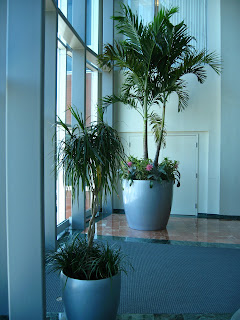

1.Phototropism is directional growth in which
the direction of growth is determined by the direction of the light source.
2. In other words, it is the growth and response to a light stimulus. Phototropism is most often observed in plants.
3.The cells on the plant that are farthest from the light have a chemical called auxin that reacts when phototropism occurs. This causes the plant to have elongated cells on the farthest side from the light.
4.Phototropism is one of the many plant tropisms or movements which respond to external stimuli. Growth towards a light source is a positive phototropism, while growth away from light is called negative phototropism.
5. Most plant shoots exhibit positive phototropism, while roots usually exhibit negative phototropism, although gravitropism may play a larger role in root behavior and growth. Some vine shoot tips exhibit negative phototropism, which allows them to grow towards dark, solid objects and climb them.
6. Phototropism is enabled by auxins.
7.Auxins are plant hormones that have many functions. In this respect, auxins are responsible for expelling protons (by activating proton pumps) which decreases pH in the cells on the dark side of the plant. This acidification of the cell wall region activates enzymes known as expansins which break bonds in the cell wall structure, making the cell walls less rigid.
8. In addition, the acidic environment causes disruption of hydrogen bonds in the cellulose that makes up the cell wall. The decrease in cell wall strength causes cells to swell, exerting the mechanical pressure that drives phototropic movement.
The above photos are examples of a ZZ plants bending toward the lighted window. Our technician had to rotate it 360 degrees to correct the phototrophic bending of this indoor office plant in Boston, MA. This will evenually correct itself and straighten out.








